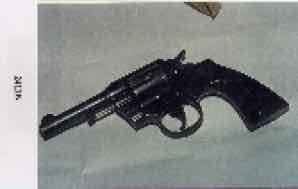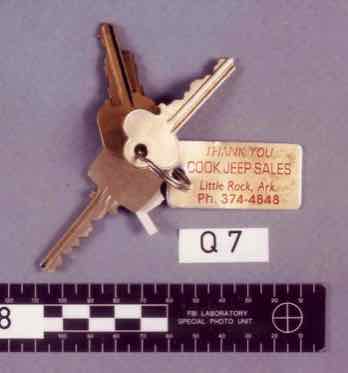Rodriguez spoke to over 100 journalists trying to blow the whistle on the cover-up of Foster's murder. The audio transcript below contains excerpts of recorded conversations. White House and Justice Department officials, members of Congress and journalists discuss falsifying official reports, witness intimidation, destruction of evidence, death threats, murder, and ultimate power. Owners and editors of the media deliberately fail to publicize this and other serious crimes committed by the highest levels of government. America’s most influential news organizations, the Washington Post, L.A. Times, Chicago Tribune, New York Times, Reuters, and the Associated Press continue to conceal the proven criminal activity on this audio.
Featuring
U.S. Attorney Miguel Rodriguez
White House Counsel Brett Kavanaugh
Grand Jury Witness Patrick Knowlton
With
Sen. Orrin Hatch - Sen. Barbara Boxer - Cong. Dan Burton - Peter Jennings - Ted Koppel - Jim Wooten - Mike Wallace - Cong. Newt Gingrich - Tim Russert - Sen. John Kerry - Sen. Pete Domenici - Sen. Bob Bennett - Sen. Richard Shelby - Dr. Donald Haut- Sen. Christopher Dodd - Sen. Ben Nighthorse Campbell - Sen. Carol Mosely Braun
Narrated by
Brian Wilson of BrianWison.net
Transcripts of the audio
Transcript Part One - Threatening a U.S. Attorney
Narrator
Since July 20, 1993, when the body of deputy White House counsel Vincent Foster was found at Fort Marcy Park, the American government, and more importantly, the American press, have concealed the true facts of the death from the American people.
Now, ten years later, we hear from the leading government investigator that Foster did not die the way officials have said. We now learn firsthand – from the person in charge of Independent Counsel Kenneth Starr's Foster death investigation – that Starr's investigation was a sham and that its conclusion was determined even before the investigation even began. Investigators altered the crime scene, and a few people controlled the outcome of the investigation. The press controlled how it would be reported.
You are about to hear the voice of Miguel Rodriguez, a United States Attorney working in Sacramento California.
Mr. Rodriguez resigned from Kenneth Starr's office of Independent Counsel in the spring of 1995, when Kenneth Starr's staff frustrated his investigation. Mr. Rodriguez resigned because he refused to join the others in covering up Foster's murder. Mr. Rodriguez revealed the truth to over a hundred people – journalists, congressmen, senators, and others, in his attempts to get the facts of the case to the public. What you will hear are actual excerpts from some of these conversations. Only the voice of Mr. Rodriguez is heard, to protect confidential sources.
In this first segment, you will hear that Vincent Foster did not die the way Kenneth Starr's predecessor, Robert Fiske, had said. The evidence does not support the conclusion of suicide.
Miguel Rodriguez:
All I know is that things did not happen the way that Fiske said that they happened. And the reports don't support what Fiske said. There's, there's really nothing is consistent with him, ah, you know, committing that kind of a violent – or that kind of violent act at all. So, it did not happen the way that Fiske said it happened.
Narrator
One fact about Foster's death was the first rescue workers to arrive at the body saw very little blood. People who arrived later saw much more blood. Robert Fiske and Kenneth Starr falsely claimed that a quantity of blood was observed where the body was first discovered. Another false story was the story by Fiske and Starr was that an early observer, a rescue worker, had moved Foster's head to check for a pulse.
Miguel Rodriguez:
By the way, you know why there was blood by the way. What happened is that by the time they got there when the body was in the position that it was in, there was no virtually no blood anywhere. Um, then there's, there are some conflicting reports about there being blood later on. Later the EMT sees blood, then Haut sees blood. Well the reason is very clear. They lifted the body and pulled it to the top of the ridge, top of the berm, and once they did that blood started flowing fast. And then when they took the body and put it into the body bag, which was right – in other words they – it was on a slope – they pull it up onto the slope. When the body is horizontal or even at the top of the berm it's not quite horizontal it's a little bit of a back-slope – and all of a sudden the blood starts gushing out, there's a lot of blood then under the body.
Narrator
Miguel Rodriguez explains that the body was moved in the presence of Park Police Officer John Rolla, with the knowledge of the medical examiner Dr. Donald Haut, and others. Rescue worker Corey Ashford arrived at Foster's body after it had already been moved Crime scene photos of the body as it had originally been observed apparently vanished.
Miguel Rodriguez:
Exactly, but Corey's also the one who – that's when the body's in the upright – not in the upright – but in the ah, in a ah, supine position, um, on the top of the berm, already, in other words, different than, some of the – Ashford and the persons who actually lifted the body into the body bag, don't see the body in its original position. They see it in a horizontal position, um, having been moved from a vertical position. And so when it's in the horizontal position there is blood coagulating under the body before it goes into the body bag. That explains the difference in there being a lot of blood. And that's what Haut sees also. Haut asks that the body be rolled, um, when it's in the horizontal position, so when Haut sees the body, the body then a horizontal state – and yes there's going to be blood.
You see so Haut actually sees the body in two positions and people are conveniently using different phrases of Haut to justify whatever result they want. Sure Haut says on one hand there is no blood, then, he says, on the other hand, there is blood. The fact is, a number of people have said there was a small amount where the body was originally found.
Narrator
Mike Wallace of 60 minutes, and Jim Wooten of ABC News along with other journalists hoodwinked the public by broadcasting that there was plenty of blood where Foster's body was found. There was more tampering with the crime scene when the FBI re-landscaped the park where Foster's body was found, destroying evidence of park trails and entrances.
Miguel Rodriguez:
And do you really know what the egress and, and access is, ah, to the Park. You have to go back to 1993. You have to go back to prior to the body being found and find out what access there was, who knew about that access, um, and how is it changed. That is the whole point, you're, again you guys really have to understand they've re-landscaped it prior to this – you know, they, they've changed gates, they've changed paths, they've changed trees, they've filled gullies, they've redefined the slope. You know the whole thing was changed when I was there. The whole area has been re-landscaped.
Narrator
Officially, Foster was found with a black colt revolver in his hand. But that's not what the first witnesses saw. Richard Arthur, a paramedic at the scene saw an automatic pistol. The investigators ignored this gun. The gun officially found in Foster's hand was not the same gun in his hand when the rescue workers arrived.
Miguel Rodriguez:
Even the Park Police, even the Park Police and the person who first saw the body, ah, saw different things. Was there a point in time where the particular gun that you described arrived and something before that was either not observed or not completely identified.
Narrator
Both paramedics at the scene saw a bullet wound in Vince Foster's neck. Miguel Rodriguez reviewed photographs of the body at the scene and also saw the trauma to Foster's neck. Fiske's Report falsely stated that, "the photographs taken at the scene conclusively show that there were no such wounds." Starr's report states that the paramedic who was saw the bullet wound in the neck ''may have been mistaken."
Miguel Rodriguez:
Both EMT's – you remember when you have a, a emergency and you call the fire department they will send their normal crew and each crew may have an EMT with them, ah, with a specially trained fire department person. Both EMT's that responded to the Park both observed trauma to the neck. While Arthur remained clear on it despite the FBI's attempt to shake him, the other one was confused by the FBI and kept saying what he saw but they kept writing it a different way.
I saw pictures that clearly indicate to me that there is trauma on the neck. I believe it's a puncture wound on the neck.
Narrator
Kenneth Starr's report on Foster's death states, "according to Secret Service records, the Secret Service was notified of Mr. Foster's death at about 8:30 p.m. eastern time on July 20th." Paramedics and rescue workers were called at 6:00 pm, and, according to Miguel Rodriguez, the White House knew well before the first 911 call was placed.
Miguel Rodriguez:
There's indications that the White House and others knew prior to the time it was officially said to be told. There was notification made well before the time that the EMTs were called.
Narrator
Reporters and editors have deceived people by publicizing the foolish idea that that too many people would have to be involved for a cover-up to remain secret.
Miguel Rodriguez:
There's not that many people who know these things really. You don't need a lot of people to know what's going on. In fact, you don't need many at all. Everyone makes a very big mistake when they believe that a lot of people are necessary to orchestrate some kind of – some result here. Very few people need to know anything about anything, really. All, all people need to know is what their job is, not why – be a good soldier, carry out the orders.
And there are a lot of people from – starting at the very night that the body was investigated, all the way down the line, there were, there were, people told to do certain things and they didn't – and their explanation now is, that they were following orders, being told what to do.
Nobody, ah, and this goes for, the FBI agents – they all, they don't necessarily know the big picture – they don't know what other people are writing in their reports. When you write a report all you have to do is make sure that it's consistent with – the most innocuous thing is to make sure it is consistent with the result that you ultimately want to get, which is not embarrass your other colleagues who have made their conclusions already.
It's a motivation which is that simple and, and, you know all of a sudden your notes don't exactly reflect what other people have said. It's very simple. It's a very, a very, ah, clean formula to achieve the result. You don't have to know the big picture. All you need to do is just have a couple of people involved.
In other words, if Braun and, you know, two or three others are out there assisting and making this all go smoothly, right, then they're the ones who ultimately collecting all the notes of the other officers, right, then they, all they do is submit their own notes and their final report. You see, very few people, okay, they've sent people out there and you, you, ah, talk to those people, interview 'em and I'll be over in a little while. You know, you come over, you get their notes and you write your report. Your report's wrong, you hope nobody's gonna catch you on it but if they do so what. It gets obscured and obscured and obscured because you, you control the central figures in the investigation. You don't need all these Park Police and all these FBI agents to know the overall scheme.
Narrator
The FBI conducted the first investigation along with the Park Police. The FBI reinvestigated Foster's death under Independent Counsel Fiske, then, Kenneth Starr used the very same FBI agents in his investigation for his investigation. The American press misled the American public by reporting that there have been several independent investigations, when, in fact, all of the investigations were done by the FBI.
Miguel Rodriguez:
Starr could only be as good as the agents – I mean how independent can Starr really be when he was being supplied by the very same agency, ah, you know with the investigative team, the same agency, that did the investigation under question – the same people.
Narrator
Another member of Starr's investigation was Mark Touhey, a former President of the District of Columbia's Bar. Mark Touhey squelched Rodriguez' efforts to issue subpoenas and call witnesses.
Miguel Rodriguez:
The games are being played with people, you know, like, like Tuohey and, and – the young aspiring people, you know, who I used to work with back in that office – who will, will say and do what they have to, to move up the ladder.
It's not just Tuohey, there's a lot of people that are, are very interested in controlling the result here. I wrote that to Starr back in January of, of this year and in December of this year it was squelched by, by Tuohey because he could yell louder than I could – he was a team player and, you know, I know, my office was searched by him, you know, um, I know what he is capable of doing. That includes throwing a tantrum and throwing chairs.
I was unable to call witnesses and issue subpoenas and, under control of the Democrat Mark Tuohey, and compromised. You know – it's in many Republican's interest to not rock the boat, because – what we're talking about is ultimate power.
Narrator
Clearly, the American Press participated in the cover-up of Foster's murder. Miguel Rodriguez said that he told "over 100" reporters much more than you're hearing today. The American Press only parroted the official lie that they were spoon-fed by Kenneth Starr's Office of Independent Counsel.
Miguel Rodriguez:
I have talked to a number of people that – you know, from Time Magazine, Newsweek, Nightline, the New York Times, Boston Globe, the Atlanta whatever, um, you know there have been well over a hundred, and this – this matter is so sealed tight um, and, the reporters are all genuinely interested but the ah, the ah, um, – reporters are genuinely interested but the ah – when they start to get excited and they've got a story and they're ready to go, the editors – and they – I've gotten calls back, I've gotten calls back from all kinds of magazines worldwide, what the hell's wrong, why can't, you know, you were telling me that you, you didn't think this would go anywhere and sure enough I wrote the stories.
They went to all the trouble of writing, and then it got killed. Again, I, I, you know, I spent almost eleven hours with, with Labaton, or six hours with Labaton, and ah, you know, I know the guy knows, um, that there's a lot more, um, ah – I know, I know the New York Times has it – knows, and just won't ah, ah, I know that they won't do anything about it and I do know that, that many people have called me back. Reporters that I've spent a lot of time with called me back and said the editors won't allow it to go to press. The accepted media here has always had, ah, a certain take on all of this. And there's been story lines from the get-go.
Narrator
There never really was an investigation into Vincent Foster's death. There was only the appearance of an investigation. Park Police investigator Cheryl Braun, admitted in testimony that the determination that the death was a suicide was made prior to her going up and looking at the body. The Fiske and Starr investigations were result-oriented. Miguel Rodriguez resigned because he would not be part of an investigation with a forgone conclusion.
Miguel Rodriguez:
It's ah, the result is being dictated by a lot higher, um, authority than I think people really understand or appreciate and certainly more than I ever appreciated. What with this whole notion ah, you know, of, of doing an honest investigation, um, you know, you know, it's, it's laughable.
I knew what the result was going to be, because I was told what the result was going to be from the get-go. And then there's all so much fluff, and a look-good job, it's just, this is all, all so much nonsense and I knew the result before the investigation began.
That's why I left. I don't do investigations like that – do investigations to justify results. There's a – again, I don't think they can go back to the fact that, and it's just a fact for me because it was told to me, the result here has already been determined. It was determined long ago. Fiske himself indicated that he had determined the result before he had ever released a report. And that's the way all the investigations have resulted – its end oriented. Again, you know, I left for a very good reason. The results, you know, were dictated and I don't do that kind of work.
Narrator
Who has the power to threaten the United States Attorney without consequence? Miguel Rodriguez was threatened. He was threatened professionally, physically, and personally.
Miguel Rodriguez:
The Independent Counsel themselves, and the FBI, beat me back, and in fact threatened me. They told me to quote, this is a quote, "back off." It was either "back off or back down." They used both of them.
You know it's – I have been communicated with again and told to you know, to be careful where I tread.
I can tell you this, that ah, ah, that it has not only to do with my career and reputation, um, they've also had to do with my personal health and my family.
Narrator
The Jason Blair's are only a distraction from what is wrong with the American press. The ongoing problem is the owners and editors that continue to protect the people who threatened Miguel Rodriguez. As long as the criminal cover-up of Vince Foster's murder continues, the journalism profession deserves the scorn of the American public.
END part one
Part Two - Special Agents
Miguel Rodriguez:
My name is Miguel Rodriguez, 650 Capitol Mall, Office of U.S. Attorney, Sacramento, 95814
Narrator:
Miguel Rodriguez, the lead investigator of Foster's death for independent counsel Kenneth Starr, spoke to over 100 journalists. One journalist, Steve Labaton, of the New York Times called Miguel Rodriguez every other day. America's most influential newspaper never reported the story. Why did Steve Labaton and the New York Times fail the public trust?
Miguel Rodriguez:
Labaton still calls me every other day. I know Labaton is a complete believer now. There is no doubt in my mind he's a complete believer. I think that he's a believer and he knows, I spent about five hours with him.
Narrator:
To make it appear that Foster was killed with a gun he owned, Kenneth Starr's staff reported the family had brought guns to Washington, D.C.
Yet there was no evidence the family owned two guns.
Miguel Rodriguez:
There was no evidence of there being two guns either, that there was evidence of two guns being brought up, no evidence at all.
There is no evidence that that gun was ever found to have ever been part of the family. It contradicts an earlier statement by Lisa [Foster] that it wasn't the gun.
Narrator:
During his effort to investigate Foster's murder, Rodriguez discovered photographs were stolen, destroyed or withheld to conceal the truth. In the first audio Rodriguez explained that Foster's body had been moved. The missing photographs would prove the perpetrators recreated the crime scene.
Miguel Rodriguez:
To be honest with you I think that ah, I think that the photographs that were taken for several people don't exist any longer or they have never been turned over to reviewing officials. At least seven were missing and that was established at one point. At least five that were taken by one particular person are gone, and don't exist in addition to the thirteen. In other words, I had a person look at 13 photographs and that person told me, "mine are not here." That person's photographs are missing, at least that much.
Narrator:
Brett Kavanaugh, Starr's associate, gave a good deal of credit to the pathology panel of experts that worked for Starr's predecessor Robert Fiske. We now learn that these so-called "experts" did not examine the original crime scene photographs. Dr. Donald Ray, Dr. Charles Hirsch, Dr. Charles Stahl, and Dr. James L. Luke viewed only third and fourth generation copies of photographs.
Miguel Rodriguez:
Even the photographs that I had developed that I really don't want to discuss right now. Even that photograph we weren't supposed to see in my opinion. You know because I had to go through great lengths to get it and I had to do it myself. That was a Polaroid, a picture of a picture of a picture. There were three layers. It was a third generation.
The first, the whole first team of forensic scientists looked at the third generation photographs, absolutely ridiculous.
I thought that was what was particularly interesting also was that the finding that we discovered that there were pictures of pictures of pictures, third generation photographs, that were used in the Fiske report.
Narrator:
Starr's office used the same photos as his predecessor Fiske. Brett Kavanaugh wrote that the conclusion of suicide was based on photographs, "gathered during the prior investigation."
Starr's associate independent counsel Brett Kavanaugh wrote, "The 35-millimeter photographs were underexposed: thus, the POLAROIDS were of greater investigative utility." Kavanaugh knew the 35-millimeter photos were not underexposed, and he had access to all first generation photos.
Miguel Rodriguez:
I found the first generation of Polaroid's. I also had the first generation negative of a 35 millimeters, very interesting stuff.
Narrator:
Miguel Rodriguez searched and found the original photographs. From those pictures he discovered that Foster had been moved to recreate the crime scene. According to Rodriguez, Park Police Officer John Rolla's report was not consistent with his own statements. Rodriguez said Officer John Rolla was "incredible".
Miguel Rodriguez:
I found Rolla's, the notes that he made at the scene, completely incredible and inconsistent with prior statements both made by him and accounts of others. I think he is completely incredible.
Narrator:
During the grand jury process, it is obvious Rodriguez learned important facts about people present at the crime scene. He does not reveal what was said during the proceedings. A slip of the tongue reveals the word "special" as in Special Agents, being present at the crime scene. The only officials at the crime scene, according to the media were; U.S. Park Police, Fairfax County rescue, and the Medical Examiner.
Miguel Rodriguez:
God! I'm just brimming over, I'm bubbling over. And I'm angry that I cannot respond. I am angry myself. Because there is much to be said. Let me suggest to you, investigate, be investigative reporters. Investigate these people too. What background did they have? Wouldn't it be surprising if, these people were special liaisons in a prior life to, in some capacity. And were there any other supervisor people out there? And, and what were the backgrounds of some of those police that were out there? There's a whole host of fertile ground out there. And have you really identified all the main players out there at the park police?
Narrator:
Patrick Knowlton, producer of this audio, testified before the Whitewater grand jury. Knowlton has first hand knowledge of grand jury witness intimidation and abuse at the hands of people like Ken Starr's associates Brett Kavanaugh and John Bates.
Rodriguez tells us that Starr used many of the same investigators that were responsible for the Fiske investigation -- the same FBI agents.
Associate counsel Mark Stein and Deputy Independent [Counsel] Roderick Lankler, whose names appear on the cover of Fiske's Report, were also retained by Starr. Rodriguez relates how Stein and Lankler reacted when he suggested that different FBI agents be used to reinvestigate Foster's death.
Miguel Rodriguez:
Well, I couldn't believe it, and these people Mark Stein and what was that guy's name, ah from New York, it starts with an "L", Lankler. My God, I couldn't, they were, they had the nerve to look at me straight in the eye, and ah, when I said, "Look, I think it might be a good idea to use different FBI agents." They went through the roof! They went absolutely nuts! They had everything the way they wanted it. It was a complete sham job. You know, again, I just think it is a whitewash.
Narrator:
As Miguel Rodriguez stated, "these people had everything the way they wanted it." Kenneth Starr and his associates knew that they could count on the American press to conceal the truth.
Patrick Knowlton:
Hello, I am Patrick Knowlton.
These audios confirm what my lawyer John Clarke, and the leading expert on the case, Hugh Turley, and I, have been telling Congress, the media and others for years.
Attorney Clarke, Mr. Turley and I spent years calling, mailing and personally delivering this information to the Congress, to the press and to others.
Every member of the 104th and 105th Congress was provided documented proof of the criminal cover-up. Every major newspaper and media outlet including the Network News, Dateline, Nightline, 20-20, Larry King Live, The Wall Street Journal, The Washington Post, New York Times, Washington Times, Los Angeles Times, Chicago Tribune, Newsweek, Time, U.S. News and World Report, CNN and countless others ignored us.
Honest journalism and honest government can be achieved. But not by contacting members of Congress and the press as we have demonstrated.
These audios when distributed will demonstrate to our family, friends, and neighbors that our current American press cannot be trusted, and with this we will take the first step toward achieving a better world.
As Miguel Rodriguez will tell you, the only battle left is the battle for public opinion.
END part two
Part Three - How Could Kavanaugh Stoop So Low?
Narrator
This is the third in a series of audio presentations produced by Whitewater grand jury witness Patrick Knowlton and his lawyer John H. Clarke. You will hear Mr. Knowlton on this audio.
You will also hear the voice of Assistant United States Attorney Miguel Rodriguez, and the voice of Associate White House Counsel Brett Kavanaugh. Both Kavanaugh and Rodriguez served as Associate Independent Counsel under Kenneth Starr. Starr chose Kavanaugh to replace Rodriguez.
In 1994 and 1995, Miguel Rodriquez was the lead prosecutor investigating Mr. Foster's death. Rodriquez thoroughly reviewed all of the federal records in the Foster case. Despite Ken Starr's and the FBI's attempts to hide the first generation crime scene photographs from him, Rodriguez discovered the original photographs.
Miguel Rodriguez is the leading government authority on the evidence. He witnessed criminal activity in the Office of Independent Counsel.
Miguel Rodriguez
Miguel Rodriguez, from the U.S. Attorney's Office. It is one thing to have read five, ten to twenty, you know, ten thousand pages worth of documents and to know what I know. I mean facts are a strange thing because they can't be denied.
And, you know, and like, for example the 35-millimeters, the hand is in a different position than the Polaroids and like if you look at some of the weeds, little weeds, fibers coming up through his hand they are different on photographs, different ah, different photographs indicate different positions based on the vegetation.
Narrator
From the photographic evidence, Rodriguez knew the perpetrators staged the crime scene.
The press publicized the search of Fort Marcy Park for the fatal bullet to give the public the impression Starr was doing a thorough investigation. The bullet was never found because it remained in Foster's head. Rodriguez discovered that the FBI, with the assistance of Doctor James Beyer, had destroyed the evidence that showed the bullet remained in Foster's brain. People asked Rodriguez if exhuming Foster's body for an X-ray could reveal the bullet trajectory.
Miguel Rodriguez
They certainly won't find a brain there. We sure don't have any way to show what the track of the bullet was, if in fact a bullet came from inside the mouth.
Narrator
The public would expect an investigation to examine telephone records of calls made to and from Vincent Foster around the time of his death. Kavanaugh wrote in the Starr Report that phone records indicated a call was placed from the White House residence at exactly 10:06 p.m. on the night of Foster's death. In the same paragraph Kavanaugh also wrote, "Complete records for such calls are not available."
Rodriguez reveals that the Office of Independent Counsel never subpoenaed any White House telephone records of calls from anyone including Vincent Foster..
Miguel Rodriguez
Telephone records are not a window into anything. Because the telephone records are only going to be as good as what the FBI asks for. Whatever else I am saying is this, okay, there is no way, based on what I knew was subpoenaed, to confirm or deny that somebody made any particular telephone calls at any particular time and that includes Vince Foster.
Narrator
After his departure, Miguel Rodriguez encouraged journalists to write articles to educate the public and the grand jurors about their powers. He realized that the common person was the last bastion of hope.
Miguel Rodriguez
Let me interject one thought, the, really the only fertile ground here for getting a, getting a, ah, full accounting done and I mean even, even beyond what Congress is capable of doing is to target the grand jury. Empowering the grand jury, letting them know what they can demand, what they should be wary of, um, what their independent subpoena powers are, um, whether they have the authority to ask questions on their own in the grand jury. The real check and balance here is um, is the grand jury, the common person, selected at random.
They read the Post. When I used to go into the grand jury, I'd see them reading the Post and the Times on these articles. They follow all of it very carefully. You target them and they are going to feel empowered. That is going to piss Starr and people like Tuohey off more than anything else.
Narrator
The press did the opposite. Their articles undermined the grand jury. Who were the unnamed government sources that fed the Washington Post and Washington Times information that undermined the grand jury. Rodriguez called a Wall Street Journal article by Ellen Joan Pollock, on March 23, 1995, "nonsense", "pernicious" and "harmful".
Miguel Rodriguez
That Pollock article was nonsense. There is so much manipulation going on in terms of what these people are trying to make people believe. It's pernicious, it is harmful.
This is all spin being put out by certain people to manipulate, not only the readership but it, you people have no idea how you affect, ah, ah, an investigation. You know, if I walk into the grand jury on the same day that some Post article said that Starr has reached an opposite conclusion than what I am doing, where is that person getting that information? Why are they timing, why are they timing it so perfectly to, to undermine what I am doing and, the attitudes. It is very, very disturbing, from that aspect on how powerful this all is.
Narrator
Miguel Rodriguez discovered that the investigators were treating witnesses inappropriately. Deputy Independent Counsels John Bates and Mark Tuohey and Associate Independent Counsel Brett Kavanaugh used the FBI to harass and intimidate witnesses who had no reason to lie. Witnesses who told investigators Foster's gray car was not at Fort Marcy Park were re-interviewed, harassed, and intimidated. The goal of Starr's office was to silence witnesses whose accounts contradicted its desired result.
Miguel Rodriguez
One thing that I met fierce opposition to, in the trenches, inside the Independent Counsel was this, I was really upset that, the, um, the witnesses who had no incentive to lie, this is the way I phrased it, why is the FBI harassing and re-interviewing witnesses who have no incentive to lie and yet we are treating with rubber gloves persons who do have an incentive to lie, and or at least not be candid. And who in fact, have made misstatements involving questionable...
What does this guy Knowlton have to gain in saying something that he said from the outset and continues to say today? And he should take an incredulous, and others should take an incredulous attitude, like a, why are you questioning me? And even in the grand jury, people can respond this way, people don't know it, why are you pushing my? why are you following me? Why are you, and you know, if Knowlton wants to make a statement, he is certainly welcome, you know, there is no problem in asking why am I being followed? Why am I, why was I being harassed in the grand jury? Knowlton should find comfort in the fact that he is not alone. He needs to know that. The guy is a damn hero.
What they are trying to do is discredit him by making him out to be, um you know a homosexual cruising at a park. The reality is we had this fight a year ago, and I was literally irate with Tuohey and the FBI agents who were snickering and laughing with Brett about this. And I was just livid! And I said I don't care if they were there @#&*ing their favorite tree I said! The fact of the matter is if they know what they saw that does not discount them, as for having the ability to recall what they saw with there own eyes! And I don't care again, if they were #@*%ing their favorite tree. And the FBI finds it particularly funny.
There is a pattern in the treatment of all of the witnesses. It is absolutely crystal clear and you can only see it when you have gone through the ten thousand, fifteen thousand documents. And when you do so, you will see that, that there is a pattern of basically harassing and misstating people who are sort of the innocent bystanders, including the EMTs [Emergency Medical Technicians] and the people who are law enforcement and FBI and White House are being interviewed once and accepted as being true. The EMTs are outstanding people, all outstanding people. They really are.
No, actually it was upon review of all of the documents in this case, my observation and statements that I indicated to, to Tuohey and Starr was that witnesses who had no incentive to lie were being unduly, questioned, (pause) inappropriately. Persons with no incentive to lie were being inappropriately treated. I think I could stand by that. You know, that was something that I believed, I believed it from the outset. You know, people like the Park Police were never asked tough questions. I tried to ask them tough questions and they beat the hell out of me. It was just bass ackwards.
Narrator
The public has no way to know how many witnesses may have been harassed and intimidated. Journalists Michael Isikoff, Steve Labaton, Micah Morrison, Matt Drudge and others spoke to Patrick Knowlton about his being harassed, but no stories appeared.
By not reporting witness's stories, journalists aid the perpetrators in silencing witnesses. Crime scene witnesses include civilians Jean Slade, Judith Doody, Mark Fiest, Patrick Knowlton, park service workers Chuck Stough, Francis Swann, as well as rescue workers, Todd Hall, Richard Arthur, George Gonzalez, Ralph Pisani, Jennifer Wacha, Cory Ashford, William Bianchi, Victoria Jacobs, Roger Harrison, Andrew Makuch, the coroner's wife and two unnamed tow truck drivers. The public does not know of these people or their stories.
One person's story that did receive media attention was the story of the confidential witness known as, "CW". His name is Dale Kyle, of Midland, Virginia, and his statements and his deposition are not consistent with the facts.
Patrick Knowlton called the authorities to report what he had witnessed. In the months leading up to his Whitewater grand jury appearance, the FBI interviewed Knowlton three times, vandalized his car, and caused him to be intimidated in his home and on the streets of Washington, D.C.
Mr. Knowlton had seen a suspicious man at Fort Marcy Park who may have been involved in the murder of Vincent Foster. After testifying for 2 ½ hours before the grand jury, what interested prosecutor Brett Kavanaugh about this unknown man at the park about 90 minutes before the discovery of Foster's body? Kavanaugh asked Knowlton, "Did he touch your genitals?"
Miguel Rodriguez
Who asked him if he touched his genitals? (Kavanaugh)
How could Brett stoop that low? I can't believe Brett did that.
Narrator
Why did Brett Kavanaugh ask Patrick Knowlton if the suspicious man had touched his genitals? Why did these prosecutors stoop to that level to discredit a witness? Patrick Knowlton saw something very significant in the parking lot. Other witnesses saw the same thing – an old brown car, with Arkansas license plates, not Foster's newer, gray car.
Mr. Foster was already dead when witnesses saw the brown car. This fact proves the official story – that Vincent Foster drove to the park and shot himself – is false.
The strategy of Starr's prosecutors was to convince the grand jury that witnesses, like Patrick Knowlton, had not been harassed. During Patrick Knowlton's grand jury testimony, Brett Kavanaugh said, "Tell us about the alleged harassment, Mr. Knowlton." Knowlton responded, "it was not alleged, it happened."
FBI agent Russell Bransford served the subpoena on Knowlton and later intimidated and harassed him. At the grand jury, Knowlton repeatedly asked Bates and Kavanaugh to tell him who had sent FBI agent Bransford to his home. Kavanaugh responded twice that they were not there to answer Knowlton's questions. When Knowlton adamantly asked again, John Bates, who was seated behind Patrick, said, "We sent Bransford." Patrick Knowlton tells us how his grand jury testimony ended.
Patrick Knowlton
Prior to going to the grand jury I was harassed and intimidated on the streets of Washington. And during that time, a three-day period, my attorney John Clarke repeatedly called the FBI and the OICs office. They never responded to give me any protection or any help. It wasn't until the following Monday that Russell Bransford showed up at my door and he interviewed me regarding the harassment. All the time I was telling him the story, of what took place, he sat there and smiled at me. And when I asked him at one point if I could trust him? He leaned over into my face and said, "Mr. Knowlton that is a good question, I don't know."
Well I was looking forward to going to the grand jury and telling them my story about my harassment and at that time, I did not realize that the FBI and the OIC were behind it.
I remember when I went to the grand jury. And towards the end of this 2 ½ hour interview, I was asked by Brett Kavanaugh to step outside of the grand jury room so the grand jurors could ask questions. When I re-entered the room, Kavanaugh first asked me if I was sure that someone else didn't see me in the park? And I replied that I hoped that someone else had seen me in the park. Then, he sarcastically asked me whether I came forward to the authorities because I was a good citizen or a good Samaritan?
Then, John Bates who was seated behind me leaned forward and passed a note to Brett Kavanaugh, from which Kavanaugh read the following questions,
He said, "Mr. Knowlton did the man in the park talk to you?" And I replied, "no."
He asked me, "Did the man in the park pass you a note?" And I replied, "no."
He said, "Did the man approach you?" And I replied, "no."
"Did the man in the park point a gun at you?" I replied, "no."
And lastly Kavanaugh asked me, "Did the man in the park touch your genitals?"
I looked at him and I was in shock. I was dumbfounded. I couldn't believe he asked me such a question. Of course, I replied, "no."
As I left the grand jury I was puzzled why the grand jurors would ask such questions? And as soon as I saw my attorney, John Clarke, I repeated verbatim the last questions I was asked. Now we know those questions, were designed by John Bates and Brett Kavanaugh. They wanted to discredit me, and my testimony.
Bates and Kavanaugh knew Foster's car, that gray car, was not in the parking lot when Foster was dead. They also knew that all of the other witnesses and I all saw the brown car in the small parking lot. No one in that park saw that Foster's gray car.
The press and the government claim that Vincent Foster drove to the park and shot himself. The fact is, Foster did not drive to the park. He did not commit suicide.
Narrator
Brett Kavanaugh was asked what evidence he had to prove that Foster's car was at the crime scene.
Brett Kavanaugh
Well I guess some of it depends on whether, whether ah, we know there was a car there. The question is whether there is evidence, um, other then that no one saw it being moved out, and ah, you know, that it had Arkansas plates, ah, ah, um, you know, I'd have to go back to the Report again and give you a full answer on that, but, I mean, I guess, I guess that is an unanswerable question.
Narrator
Kavanaugh's answer did not provide any evidence that Foster's car was at the crime scene. Kavanaugh is asked a second time about witnesses who saw the brown car.
Listen to Kavanaugh use the phrase "those facts" to avoid using the words, "brown car."
Brett Kavanaugh
What, what you don't like, and I understand this, so I'm not going to get defensive or offensive, is that the ah, you know, you think those facts lead to a certain conclusion, and the Report suggests that those facts do not necessarily lead to any conclusion other than, you know, inconsistent with the ultimate, ah findings, so that is just a debate about what inferences you would take from the facts, that are there, compared to the inferences taken by the, um, Report, which is fine. People disagree about that all the time, I mean the Starr Report seems definitive and, not definitive you wouldn't agree.
But at least in discussing the physical evidence and why it's unlikely what was in the, ah, scene in the parking lot contradicts any of that. I think that's the actual phrasing that's used. But I don't think there was anything ignored, I'll go back and look at that though.
Narrator
For the third time, Kavanaugh is asked what evidence he had to prove that Foster's gray car was at the scene.
Brett Kavanaugh
That, that's the question ah, that there was questions about whether people were mis-describing colors or something like that, now that's one inference, another inference is that there was another car and that's just ah, and then there's a third inference that, I suppose which is that his car, the gray car wasn't there and they switched the cars after the [fire] engine arrived. That's an inference.
Narrator
Kavanaugh is asked a fourth time what evidence he had that Foster's car was in the parking lot. Either Foster's car was there or it was not.
Brett Kavanaugh
Well at least we you know, at least you know, the Report, look the Report was trying to be honest about a few things, and ah, that, that, the people had complained about with the Fiske Report, and one of them was the fact that there were these cars and people saw different cars and different people.
What about the people, I mean this gets to a problem, what about the people who seemed clearly to see ah, Foster's car, and described it as brown. So, people were screwed up on the colors, period.
Narrator
Kavanaugh is right, there is a problem.
Brett Kavanaugh
What about the people, I mean this gets to a problem. What about the people who seemed clearly to see ah, Foster's car, and described it as brown.
Narrator
Kavanaugh's statement that people clearly saw Foster's car is not true. Descriptions of a brown car are not descriptions of Foster's gray car. How does Kavanaugh resolve the problem?
Brett Kavanaugh
So, people were screwed up on the colors, period.
Narrator
Brett Kavanaugh called eyewitnesses "screwed up" because what they saw did not agree with the desired result.
But Kavanaugh slipped up. He admitted that all of the police and medical personnel saw a brown car.
Brett Kavanaugh
Well it all comes down to that brown car issue, right? Ah, all the police and medical personnel that were in the park also described it as brown.
Narrator
The conclusion that Vincent Foster committed suicide depends on yet another provable lie – that Foster drove his children's gray Honda to Fort Marcy Park.
Patrick Knowlton and all the other witnesses were correct. There was no gray car in the parking lot.
We just heard Kavanaugh admit that all witnesses were consistent that the car was brown, proving that Foster did not drive his children's car to the park.
Earlier in this audio, we heard Kavanaugh admit that the civilian witnesses reported seeing a brown car, and claimed to believe that all these civilians were all simply mistaken, or, "screwed up."
But twenty-four officials arrived at the park that night, and Kavanaugh admits that these twenty-four police and medical personnel all saw a brown car.
Brett Kavanaugh
Ah, all the police and medical personnel that were in the park also described it as brown.
Narrator
Kavanaugh learned of this evidence, disproving the suicide theory, from grand jury testimony. Yet, Kavanaugh knowingly withheld this evidence from Starr's Report on Foster's death, and submitted the Report to the United States Court of Appeals, to the Special Division for the Purpose of Appointing Independent Counsels.
Did Kenneth Starr knowingly allow John Bates and Brett Kavanaugh to submit a fraudulent Report to the United States Court of Appeals?
Kavanaugh was willing to do what Miguel Rodriguez was not willing to do: To lie. Kavanaugh's lie that Vincent Foster drove to the park and killed himself was made to perpetuate the cover-up of the murder.
Brett Kavanaugh and John Bates were among those young, aspiring, people, about whom Miguel Rodriguez said, "will do what is necessary to move up the ladder." And move up the ladder they have. John Bates is now a federal district court judge in Washington DC and Brett Kavanaugh serves as an official in the White House. President Bush recently nominated Kavanaugh to be a judge on the United States Court of Appeals for the District of Columbia Circuit.
Patrick Knowlton
I am Patrick Knowlton producer of these audios. We have shown that our government and our press have been caught in a provable lie. When our leaders and our press are covering-up murder, the safety and well-being of the American people are threatened.
If our press and the government will lie to us about the murder of a White House official we should ask what else are they lying to us about?
END part three
Part Four - Be A Good Soldier
Narrator
This is part four of a series produced by Patrick Knowlton. On this audio, you will hear, Miguel Rodriguez, the most qualified government official to speak on Foster's death. You will also hear comments by media personalities and members of Congress, including Senator Orrin Hatch and Representative Dan Burton.
The Federal Bureau of Investigation conducts background checks on the president's nominations for federal judgeships. This agency, and possibly the same FBI agents, that assisted Bates and Kavanaugh in covering-up Foster's murder, assures that nominees have no criminal background, and so are qualified to serve as judges.
The Senate Judiciary committee, chaired by Senator Orrin Hatch, confirms judicial nominees. Listen and compare the comments of Miguel Rodriguez to Chairman Hatch.
Senator Orrin Hatch:
Accordingly, I want to be clear on one point, there is absolutely no credible evidence to contradict the Fiske Report's conclusion that Vincent Foster took his own life, and it happened at Fort Marcy Park. There is no credible evidence to the contrary. I suspect conspiracy theorists will always differ with this conclusion.
Miguel Rodriguez:
Both EMTs that responded to the park. Both observed trauma to the neck. I saw pictures that clearly indicate to me that there is trauma on the neck. I believe it's a puncture wound on the neck.
There is really nothing that is consistent with him committing that kind of violent act at all.
Narrator:
The public has been told by the media that the Senate Banking Committee investigated the death of Vincent Foster. Compare the remarks of committee members with those we have heard from Miguel Rodriguez. First is California Senator Barbara Boxer:
Barbara Boxer: The first issue is the Vince Foster death. Independent Counsel states quote, "the overwhelming evidence compels the conclusion that Vincent Foster committed suicide. There is no evidence that issues related to Whitewater played any part in his suicide." Now you've heard that several times, but that's the crux of the matter.
Miguel Rodriguez:
This whole notion of doing an honest investigation is laughable. I knew what the result was going to be, because I was told what the result was going to be from the get go.
Narrator:
Republican Senator Bob Bennett:
Bob Bennett:
I will be happy to stipulate that Vince Foster committed suicide. There was a time when the rumors that were in the press lead me to believe there was some credence to an additional theory. I find no possible justification for that now and I am one senator who is willing to say that this hearing should not be about whether or not Vince Foster committed suicide. He committed suicide, I'll so stipulate.
Miguel Rodriguez:
All I know is that things did not happen the way Fiske said that they happened, and the reports don't support what Fiske said.
Narrator:
Senior Republican Senator Pete Domenici said the Republicans would not challenge the Fiske Report.
Senator Pete Domenici:
With reference to his death I don't think anyone on our side is challenging the suicide. So perhaps we can get rid of that rather quickly.
Miguel Rodriguez:
It is in many Republicans' interest to not rock the boat, because what we are talking about is ultimate power.
Narrator:
Former Democrat and now Republican, Senator Ben Nighthorse Campbell:
Senator Campbell:
These hearings begin with the investigation of Vincent Foster's suicide and that should turn the stomach of any caring American. I really believe we should drop that whole issue. The Park Police, the FBI, the Medical Examiner, the Independent Counsel they are all professionals and they did their job and concluded that Vince Foster did indeed commit suicide.
Miguel Rodriguez:
And this is all so much fluff and a look-good job. This is all so much nonsense. I knew the result before the investigation began.
Narrator:
Democrat Senator Christopher Dodd:
Senator Dodd: This panel is a banking committee, not a medical board of inquiry. We're senators not coroners. There are some legitimate questions that ought to be examined but probing in a macabre way into the family tragedy, that all that have looked at it have concluded was tragically a suicide and nothing more. I hope we can move through very quickly and get to the issues that are more important in my view.
Miguel Rodriguez:
They had the nerve to look at me straight in the eye, and ah, when I said, "Look, I think it might be a good idea to use different FBI agents." They went through the roof! They went absolutely nuts! They had everything the way they wanted it. It was a complete sham job. You know, again, I just think it is a whitewash. I know these people and I know what they are trying to do. I know where they want to go. Where they want to go is the path of least resistance.
Narrator:
Democrat Senators Carol Moseley-Braun and Senator John Kerry:
Carol Moseley-Braun:
Mr. Chairman I would like to associate myself with the remarks of Senators Bennett and Boxer regarding the Vincent Foster issue. We are not conducting an investigation into a suicide.
Senator John Kerry:
The FBI, the Park Police, the Foster family and the Special Counsel have all concluded that Vince Foster tragically took his own life. The medical examiner, the FBI laboratory, the DNA analysis on the gun, the medical and forensic experts all agree yet somehow here is the United States Senate giving credence to the most insulting, degrading, lurid, and lunatic theories that people could invent.
Miguel Rodriguez:
Very few people need to know anything about anything really. All people need to know is what there job is, not why, be a good soldier, carry out the orders.
Narrator:
Alabama Senator Richard Shelby and Vincent Foster were next door neighbors in a Georgetown rowhouse. This is what Senator Shelby said about his neighbor:
Senator Shelby: It is my understanding, as others have said, and people have testified like Doctor Hirsch, um, that it was a suicide and I have no reason to question that. And I was hoping that we can close this forever.
Miguel Rodriguez:
Even the Park Police, even the Park Police and the person who first saw the body, ah, saw different things. But there was a point in time where the particular gun that he described arrived and something before that was either not observed or not completely identified.
Narrator:
Peter Jennings aided the cover-up when he announced that ABC News had been, "investigating to see if there is any truth to the rumors," about Vince Foster's death. But the ABC news investigation did not include interviewing Patrick Knowlton and other witnesses that could prove Foster did not drive his family's gray Honda to the park .
On March 11, 1994, ABC News broadcast the conclusion that Vince Foster committed suicide. At that time, only two witnesses had been interviewed by Robert Fiske. Miguel Rodriguez told us, the conclusion was determined long ago and "the news media had the story line from the get go."
Peter Jennings:
Another story about violence, in Washington today the White House is accusing Republicans of spreading irresponsible and unsubstantiated rumors about the Whitewater affair. In particular a rumor circulating yesterday insinuating foul play in the death of Vince Foster, the White House Counsel, who police have said committed suicide last summer. We have been investigating to see if there is any truth to the rumors. Here is ABC's Jim Wooten:
Jim Wooten:
The common thread is that Foster was murdered someplace else, that his body was moved to this park above the Potomac where it was found. And feeding all this speculation, is more speculation. For instance, the rumor that there are no photographs of the scene. There are. ABC News has seen a complete set, including this one showing Foster's hand, his thumb caught in the trigger guard. Some rumors insist there was little or no blood on or around Foster's body. The grim and graphic photographs of the scene prove that is not true either. The White House itself may have fueled some of the rumors with its own incompetence in the hours after Foster's death. But there is little reason now to doubt that for whatever reason he may have had, the President's boyhood friend drove himself across the Potomac one afternoon last July and tragically took his own life. Jim Wooten ABC News Washington.
Miguel Rodriguez:
The photographs that were taken for several people don't exist any longer or they have never been turned over to reviewing officials. I had a person look at thirteen photographs and that person told me mine are not here. So that person's photographs are missing.
At the time they got there, and the body was in the position that it was in, there was virtually no blood anywhere.
Then there are some conflicting reports of there being blood later on. Later the EMT sees blood, then Haut sees blood. Well the reason is very clear. They lifted the body and pulled it to the top of the ridge, to top of the berm, and once they did that blood started flowing fast.
Narrator:
Why did Fiske and his FBI investigators give ABC News the death scene photographs during their ongoing investigation? Six years after Starr issued his conclusion, the public is still denied the right to view the photographs. A Freedom of Information Act suit, by Attorney Alan Favish, to release the photographs is before the United States Supreme Court.
Does the news media act as the voice of the government or does it serve as the eyes and ears of the American people?
Miguel Rodriguez told us he spoke to over 100 journalists, including ABC's Nightline. Ted Koppel talked to Miguel Rodriguez and knew that Rodriguez would not join the criminal cover-up. Publicly Koppel concealed what Rodriguez told him. Koppel discredited Rodriguez for not being a team player.
Ted Koppel: Let me just put a slightly different turn on the facts as you have recounted them. I am familiar with the gentleman of whom you speak. I am familiar with the charges. The only difference with the version I have heard and the version you have recounted is that I have heard is that he is described as a guy who wanted to go off on his own, who did indeed want to follow some leads that his superiors did not want him to follow, because they wanted to follow a team approach there. But that in and of itself, and I don't think even Mr. Rodriguez, would take the position that he had evidence, of Vince Foster having been killed.
Miguel Rodriguez:
Well I wrote that to Starr back in January of this year and it was squelched by Tuohey, he could yell louder than I could. He was a team player. I know. My office was searched by him.
There is really nothing that is consistent with him, ah, you know, committing that kind of a violent – or that kind of violent act at all.
Narrator:
After Miguel Rodriguez contacted ABC Nightline, Ted Koppel did not report the evidence that Foster was murdered. Nightline's host misled viewers by broadcasting the foolish idea that if Foster had been murdered too many people would have to be involved in a conspiracy.
Ted Koppel: Let me take for the moment what you have said, with a grain of salt. But let's assume for the sake of argument that it were true. One would then have to also conclude that everyone who subsequently has investigated this case, now I'm not now talking about reporters, I'm talking about the FBI, I'm talking about the Senate Banking Committee, I'm talking about the Park Service itself, all those who have investigated it, and all those who have subsequently read all of the reports, would have to be in collusion, say for whatever reason, I'm wondering what reason you might think, ah would bring Democrats and Republicans, critics and friends of the Clinton administration, to, to conspire to come to that conclusion.
Miguel Rodriguez:
You don't need a lot of people to know what's going on. In fact, you don't need many at all. Everyone makes a very big mistake when they believe that a lot of people are necessary to orchestrate some kind of – some result here. Very few people need to know anything about anything really. When you write a report all you have to do is make sure it is consistent with, the most innocuous thing is to make sure it is consistent with the result that you ultimately want to get, which is to not embarrass your other colleagues who have made their conclusion already.
Narrator:
Knowlton learned that Miguel Rodriguez was talking to the New York Times, Washington Post and the Associated Press, at the same time Rodriguez contacted Nightline. Miguel Rodriguez told Ted Koppel about the criminal activity in Kenneth Starr's Office of Independent Counsel. Why is Ted Koppel still asking for someone to give him the evidence?
Ted Koppel:
The impression that somehow if there was a great, dramatic, indeed shattering story like the one just mentioned, that those of us in the media have anything to gain, I'm talking now about the mass media, by not broadcasting it. You give me the evidence, I'll be delighted to broadcast it. I have no particular problem with where the ideology of a story comes from, as long as I can prove it to be true. Okay?
Narrator:
Patrick Knowlton personally delivered evidence of his intimidation to every news organization including Ted Koppel personally. Mr. Knowlton also included the proof Foster's car was not at Fort Marcy Park. Koppel told his producer to ask Patrick Knowlton to bring his evidence to his ABC office. After meeting with Nightline's producer, ABC never contacted Patrick Knowlton again.
Miguel Rodriguez:
I have talked to a number of people from Time Magazine, Newsweek, you know, Nightline, there have been well over a hundred. And this matter is so sealed tight the editors won't allow it to go to press. The accepted media here has always had, ah, a certain take on all of this. And there's been story lines from the get-go.
Narrator:
When confronted with their failure to report important news, an excuse offered by journalists is, "We don't have the facilities. We don't have the time." It is interesting that stories like Monica Lewinsky get the full attention and resources of the press. Corruption uncovered by the government is acceptable, without question, and reported. Serious government corruption, uncovered by citizens, is suppressed and/or dismissed as conspiracy theories.
Ted Koppel:
I do five programs a week on Nightline. For example, turning out 2 ½ hours of broadcasting every week means that on average we will probably spend, I'm talking about different members of our staff, perhaps, five or six days on a program. Some programs we may spend five or six hours on. If news breaks, a major news story breaks at seven o'clock in the evening or at eight o'clock in the evening, we'll have it on Nightline at eleven-thirty at night, three hours later. There is no question in my mind, and it has always been so, that the fringe media, on the left and on the right, the smaller organizations, the ones that can and do in fact, focus an enormous amount of attention, on a particular story, sometimes spending many months, even years on a story, that it is often the fringe media that will develop a story that is ultimately picked up by the mass media. If you are looking to the mass media to do the real investigative journalism, if you're looking for Nightline to do major investigative stories, you're looking in the wrong direction. We don't have the facilities we don't have the time. I have a staff of 50 people and we do 2 ½ hours of broadcasting a week.
Narrator:
When it comes to reporting the news, ABC is no different than FOX, CNN, NBC and CBS. Compare the comments of journalist Mike Wallace of CBS 60 Minutes, to what we now know from Miguel Rodriguez. It is clear that Mike Wallace has it wrong.
Mike Wallace:
What really happened to Vince Foster? Did President Clinton's boyhood friend kill himself or was he murdered? Foster's body was found outside Washington more than two years ago, but still we read stories about his death almost every day. And just as often viewers call or write asking us to investigate. So we have taken a look at what really happened to him.
But the evidence does not indicate that to any of the investigators, all of whom concluded that the body could not have been moved.
Dr. Donald Haut you are the Fairfax County Medical Examiner?
Dr. Haut:
Yes I am.
Mike Wallace:
Was there a suspicious lack of blood at the scene?
Dr. Haut:
Absolutely not.
Mike Wallace:
Did you tell a reporter by the name of Christopher Ruddy that there was an unusual lack of blood?
Dr. Haut:
No.
Mike Wallace:
Christopher Ruddy says that you changed your story.
Dr. Haut:
No. That's not true.
Miguel Rodriguez:
So Haut actually sees the body in two positions and people are conveniently using different phrases of Haut to justify whatever result they want. Sure Haut says on one hand there is no blood, but, he says, on the other hand, there is blood. The fact is, a number of people have said there was a small amount where the body was originally found. Later on it's moved to a horizontal position at the top of the berm, it does have some seepage under the body. So when Haut sees the body it is in a horizontal state, so yes there is going to be blood. Haut actually sees the body in two positions.
Narrator:
Mike Wallace and Jim Wooten of ABC News hoodwinked the public by broadcasting that there was plenty of blood where Foster's body was found.
NBC's Tim Russert, without presenting facts or evidence, suggests the public should accept and trust whatever the authorities say.
Tim Russert:
The Fiske investigation, a former Republican U.S. attorney, concluded the death was a suicide. If Ken Starr, a man who accepted the position as Dean of the Pepperdine Law School, School of Public Policy, if he concludes, if he concludes, that Vincent Foster's death was a suicide, will you then accept that?
Narrator:
NBC's Tim Russert personally received the evidence of Patrick Knowlton's harassment and what he and other witnesses saw at Fort Marcy Park. Knowlton appealed to Tim Russert to look at the evidence and report the story of his harassment. Tim Russert took Knowlton's evidence and telephone number, but Russert never contacted Knowlton. The private Tim Russert is different from the public Tim Russert:
Tim Russert:
And if there is a situation where an individual is being harassed or is placed in harm in any way, shape, or form, be it Waco, Ruby Ridge, wherever the case may lead us we'll be there covering it.
Miguel Rodriguez:
It was the Independent counsel themselves and the FBI that beat me back, in fact threatened me. They told me to back off and back down. I have been communicated with again and told to be careful where I tread. I can tell you this it's not just my career and reputation, but it also has to do with my personal health and my family.
Narrator:
Several prominent Senators stated their agreement with Robert Fiske's Report. on Foster's death. Patrick Knowlton met personally with many members of Congress including House Speaker Newt Gingrich and Dan Burton. Publicly, Speaker Gingrich stated that his committee chairmen would investigate Foster's death.
House Speaker Newt Gingrich:
Newt Gingrich:
I think we are entitled to a full airing and I think you are going to find that Congressional hearings are going to raise those questions. I was very struck by an article I think it was in the Investors Business Daily, ran a very long article that I thought was stunning, raising question after question about Foster and what happened there. And I have asked several of our Congressional chairmen of our committees to look into that and I think you will be seeing some hearings on these topics because when you look at them there is just too much there to not try to find out what really happened.
Narrator:
Privately, Dan Burton, Chairman of the Government Oversight Committee, in a meeting with Patrick Knowlton promised he would hold hearings to investigate Foster's death.
Representative Dan Burton:
Representative Dan Burton:
You know me, if I tell you something it is going to be the straight scoop or I won't tell it to you. I am not going to violate your trust. I promise.
Well let me just say I had an interview with Novak. And anytime I am talking to the media, even my good friend Bob Novak, I am not going to say that I am going to re-open any investigation, the Travel Office, the FBI, Vince Foster or anything. Now that doesn't mean that I am not going to look into things that I think are relevant or important, and I am going to do that.
Oh no, what I said was that unless I have additional information that would lead me to believe that we ought to re-open any of the investigations then I am not going to do anything. Now that doesn't mean that, see I'm going to be looking into all of this to find out if there is additional information. But publicly I am not going to re-open the investigation unless I get something. There is no need to do it. And I am going through it. And if that, that, that, that, that, would shed new light on it, of course I am going to explore it.
Listen to me. I, I, I, I am going to look into every aspect of every one of these investigations. I am going to go through all the files that Clinger had. I am going to go through my files. I've got a deposition of the man who found his body. But I am not going to divulge how I am going to conduct any of this until the proper time. And what I need is something to hang my hat on that will show that there is additional information or evidence.
Now you got to do that in a very careful way. Otherwise the media is going to have a field day. They are expecting me to do that. They expect me to right off the bat to start beating on the Foster issue. And, and I can't do that right off the bat. Just give me a little bit of time to go through this.
I do what I say I am going to do and if you don't trust me. If you don't want to give me information then don't do it.
I am just telling you as chairman of this committee I got three investigations, right now. I got Travel Office, I got FBI and now I got these illegal contributions. And I have got to deal with those.
Now Foster, I told you and I still believe this. I said it on the record to the New York Times or Washington Post I can't remember which one. I said I don't recant anything I said about Foster. I believe his body was moved. I believe that Report was in error. I believe what the confidential witness said.
But I have got to do this at the right time. And I don't think starting right off the bat doing this would be the right thing to do because they would, they would try to blow that up and make it look like I was not a credible chairman. So what I've got to do is deal with the things that are right on my plate which are Travel Office, Filegate Office, er File Office, er FBI Files, and this this issue right now.
And Foster you may rest assured. I am going to look at all the documents I possibly can. I'm going to look at those pictures. I am going to look into that. This is not the time to be beating on that drum until we're ready.
Well, then don't believe me.
Miguel Rodriguez:
I still have hope that what I uncovered will not be explained away.
END part four
The Rodriguez Tapes
Brett Kavanaugh and John Bates,
Two lackeys for Kenneth Starr,
Supplanted one far more scrupulous.
Now see how successful they are.
Covering up a murder
May fill the air with its stench,
But for George W. Bush,
It has made them fit for the bench.
-David Martin
Frustrated in his efforts to uncover the truth, Associate Independent Counsel Miguel Rodriguez submitted his resignation letter to the Independent Counsel Kenneth Starr.
Miguel Rodriguez was the lead investigator inside the Office
of the Independent Counsel tasked look into the death of Vincent Foster
In a 30-page memorandum Rodriguez stated that he did not think Foster committed suicide at Fort Marcy Park and that park police staged the "suicide" placing a gun in Foster's hand and re-photographing the crime scene. Each page of the memo is initialed by Rodriguez and his assistant Lucia Rambusch.
Audio of Associate Independent Counsel Miguel Rodriguez
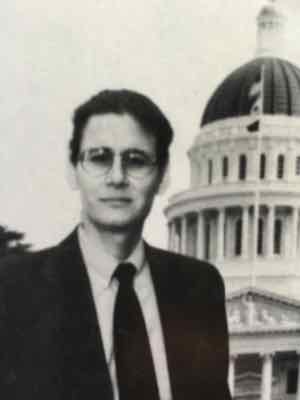
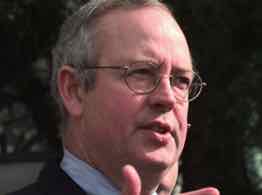

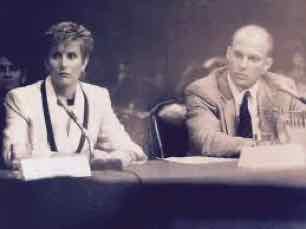
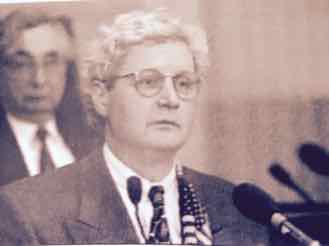
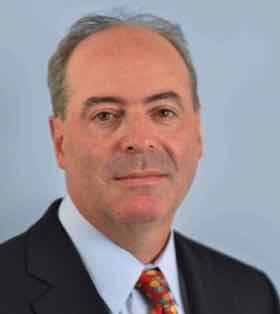

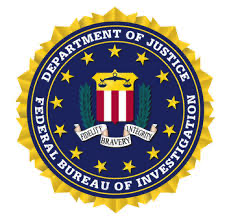
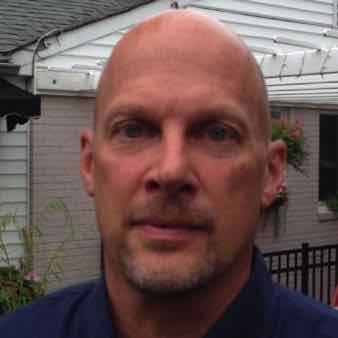
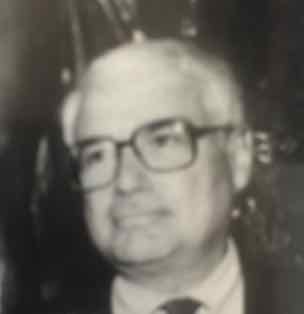
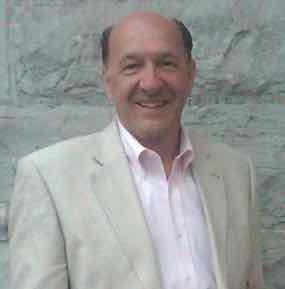
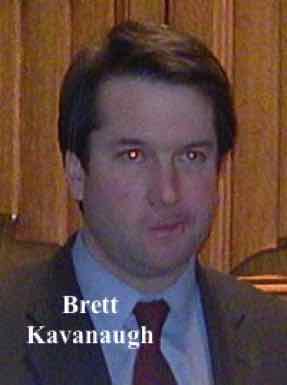
suspect i
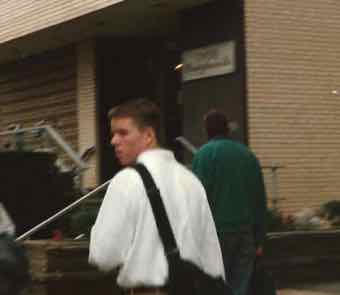
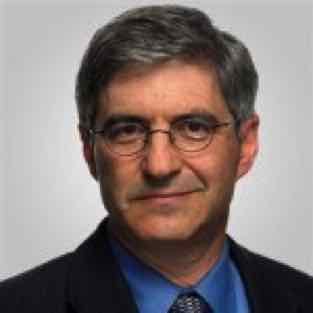
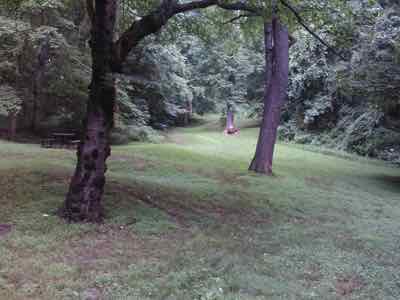

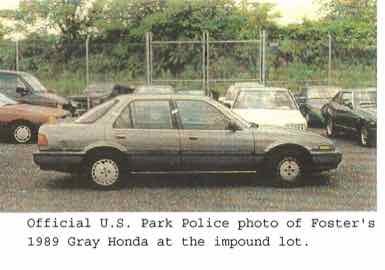
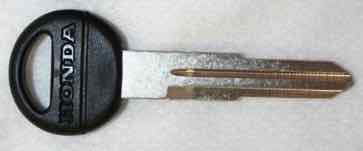
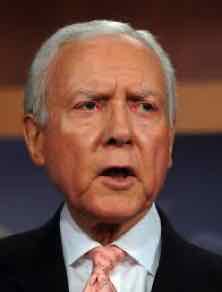

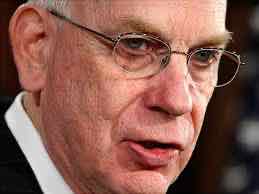
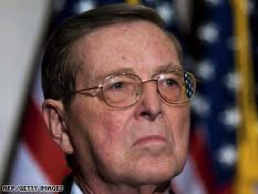
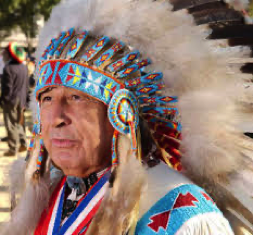
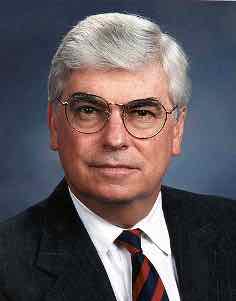

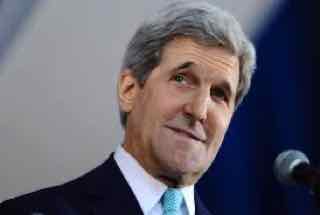
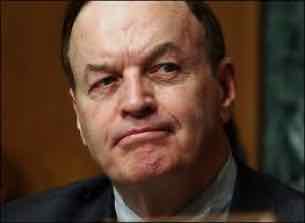

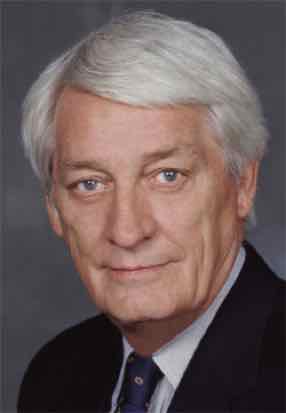

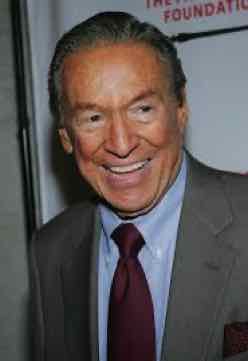
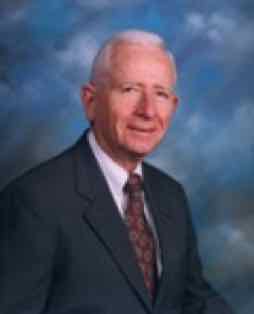
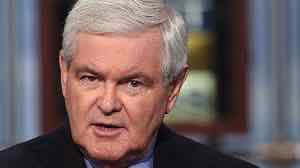
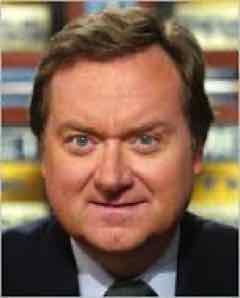

Miguel Rodriguez
Associate Independent Counsel
Ken Starr
Independent Counsel
Robert Fiske
Special Prosecutor
Fort Marcy Park where Foster's body was found
This gun was planted in Foster's hand by police to stage the crime scene
Park Police detectives Cheryl Braun and John Rolla testifying before the U.S. Senate Banking Committee
Mark Tuohey
Deputy Independent Counsel
Steve Labaton
New York Times reporter
Park Police officer
John Rolla
Roderick Lankler
Patrick Knowlton grand jury witness
Journalist Ellen Pollock
Brett Kavanaugh
Associate Independent Counsel
Witness intimidation suspect #1
Witness intimidation suspect #2
Journalist Michael Isikoff
Fort Marcy Park
Early 1980s Brown Honda like the one seen by witnesses at Fort Marcy Park
Official FBI photo of Vince Foster's keys with NO HONDA CAR KEY
A 1989 Honda car key
Sen. Orrin Hatch
Sen. Barbara Boxer
Sen. Bob Bennett
Sen. Pete Dominici
Sen. Ben Nighthorse Campbell
Sen. Christopher Dodd
Sen. Carol Moseley-Braun
Sen. John Kerry
Sen. Richard Shelby
Foster's next door neighbor
Peter Jennings
Jim Wooten
Award-winning journalist
Ted Koppel
ABC News
Mike Wallace
CBS News
Dr. Donald Haut
Medical examiner
Tim Russert
NBC News
Newt Gingrich
Congressman Dan Burton
Kavanaugh audio with Reed Irvine is unable to answer the question, "What evidence do you have that Foster's car was at the park?"
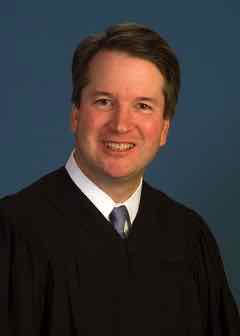
Judge Brett Kavanaugh
Brett Kavanaugh replaced Miguel Rodriguez and then asked the grand jury witness Patrick Knowlton, "Did the man touch your genitals?"
Later, Miguel Rodriguez would say, "How could Brett stoop that low?"
